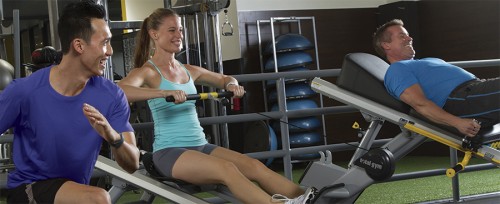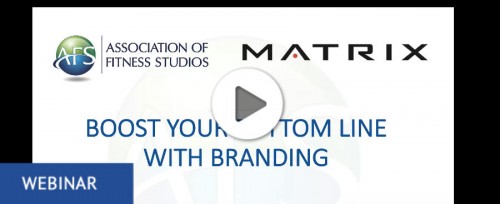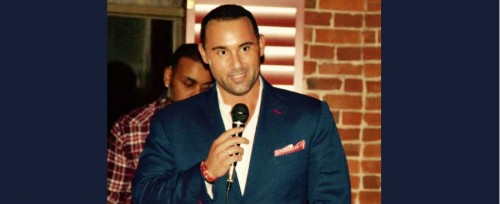Learning Center
We’ve consolidated our videos, guides, webinars and more into the AFS Business Learning Center. Browse the resources, and use the concierge service if you need help with any topic.
Clients come into a fitness studio for diverse reasons. They may want to lose weight, increase strength, train for a specific activity, or simply feel and look better. Clients across age and conditioning levels tend to share certain motivating factors. They are often strong on desire for physical transformation, and short on confidence, patience and time.
Resistance incline bodyweight training—both equipment and training methods—can be the perfect studio solution for at least five important reasons.
Building a team of dedicated and engaged employees sits at the foundation of every business strategy. In the fitness space, this becomes more critical as success in our industry means we provide a service that enables people to live a healthier quality of life. It’s a grandiose mission with (typically) a less than grandiose compensation plan.
Ask any manager, trainer or even instructor, none of them chose this career to make a lot of money.
Get expert advice on how the best fitness studio owners have not only become successful but maintained that success.
As personal trainers and coaches, it is essential that we find out the “why” when it comes to our clients. Why are they training? Without this information, it is almost inevitable that one day that client will walk away from training with you. So, what are the main areas of motivation for clients?
There are four categories of client we’ve all seen. They want to change their appearance, relieve pain, feel healthier, and/or train or prepare for an event.
Typically, marketing is impersonal. It involves putting up a cleverly worded offer in a newspaper or online and then waiting for the clients that you’ve never met or spoken with to respond. For many types of products and services across many industries this approach works.
However, when it comes to aging adults and fitness this approach is seldom fruitful. Yet it is still the most common way for fitness professionals to try to get clients. This leads to a vicious cycle of frustration.
Ever heard the sayings, “Everything in moderation” and, “Less is more,” in relation to exercise? Although exercise is clearly beneficial to our health and well-being, it is true that sometimes, too much of a good thing can be harmful to our health and performance.
This is the concept of overtraining, a condition in which training too frequently or too intensely causes decreased exercise performance and increased illness or injury.
AFS and MATRIX Fitness are excited to bring you this very important webinar focused on crafting a plan for maximizing revenue per square foot. Learn the key components to distinguishing your studio in a noisy fitness world. Walk away with several activities to further clarify your brand and boost your bottom line with minimal effort.
2017 is set to bring even more advanced technology to the fitness industry, especially to the discipline of heart monitoring and heart health.
Putting your business on the cutting edge of this technology can give you an edge that will last you the entire year, creating a more engaged relationship between you and your clientele based around a more effective fitness program. Here are just a few of the ways that fitness technology can change your business for the better.
It’s the end of the year and things are wrapping up soon. Clients are getting ready for the holidays and perhaps you, too, are looking forward to some time with family and friends and relaxing a bit before the New Year hits.
Between servicing current clients, marketing for new clients, standard business administrative work, family, holiday shopping, and other obligations, there seems to be not a single minute of time left to do anything…let alone catch up on some sleep.
We all have relationships of many different degrees and facets in our lives. We have our families, our friends, and those acquaintances and professional contacts we see monthly, weekly or even daily. I ask you all to take a step back and take stock in specifically those professional relationships you have and how long you have had them for.
If I think of my own, I have had the same hair stylist now 11 years, visit the same nail salon for 3 years, and even the same esthetician for almost 4 years.
From net client growth to class participation, tracking and analyzing you numbers is a critical piece to running a successful fitness studio.
Calculating ROI can sometimes be difficult to quantify. In this Q&A clip, Ingrid Owen talks about how to ensure your programming is receiving a solid return on investment.
Before we even dive into this question, I think it’s imperative that we first look at a couple of other things, first:
QUESTION 1 - What is a “trainer”?
Defined by Wikipedia – “A personal trainer is a fitness professional involved in exercise prescription and instruction. They motivate clients by setting goals and providing feedback and accountability to clients. Trainers also measure their client's strengths and weaknesses with fitness assessments.”
As holiday season rolls around, we’re all gearing up for a season of friends and family. In our fitness lives, member and client travel and vacation plans at times seem to relegate fitness to the last thing on everyone’s mind.
While it may seem like a last ditch effort, running a holiday sale might be one of the most beneficial tactics your fitness business can engage in before the end of year.
There is a difference between being average and great. In fact, fitness studios in the top quartile generate revenues and EBITDA per square foot more than double the industry average!
And studio owners and staff are reasonably compensated. Studio owners take home more on average than most small business owners and their staff are paid equally or better than those in the traditional industry. Where do you fall?
What do you charge? When compared to traditional fitness offerings studios command higher price points by driving greater value for the customer!
Plus, fitness studios are productive at generating revenues and earnings - which means productivity tends to be better in smaller studios despite larger studios having higher absolute numbers.
Did you know? More and more studios are moving away from the pay as you go models to membership models. Learn the different types of access offerings sold, including percentage distribution by type of package offered.
Plus Stephen Tharrett talks about why studio business models are so diverse and unique!
Are you set up for success? Stephen Tharret showcases the latest research including how planning is bringing the future into the present so that you can do something about it now.
What is your studio’s greatest challenge for attracting new clients? This industry-leading research will get you on track!
Differentiation is real and can make or break you. Stephen Tharrett talks about “True differentiation, sustainable differentiation, is rarely a function of well-roundedness; it is typically a function of lopsidedness.”
And how it’s about providing specialized, high touch, personalized, intuitive, fun experiences led by passionate professionals who are able to foster the creation of self-supporting tribes.
FBA is Right For Everybody
• Trainer, Manager or Owner • Beginner or Veteran • 500-10,000 sq.ft.




















